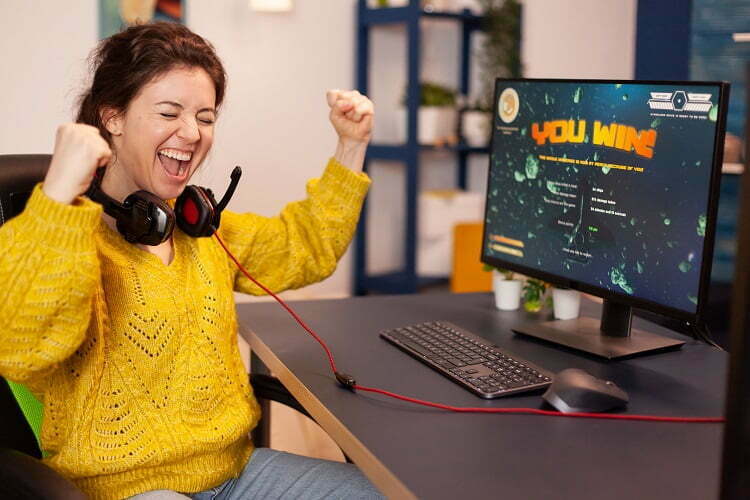Blog
How gamified employee training improves your employee learning engagement
- June 14, 2022
- Posted by: Jignyasa Bal
- Category: Blogs

By 2025, the gamification market size is expected to reach $30.7 billion. In 2020, its value was $9.1 billion. That is a 27.4% growth rate.
The impressive number is not hype. Corporate L&D is the primary driver of this growth. Gamified employee training programs account for 47.5% of the total usage.
Why organizations are betting big on gamification? Let’s find out!
This article will explain gamification, gamified employee training, and what to expect from gamified training programs.
What is gamification?
By definition, Gamification is the conversion of non-game situations into a gaming scenario. It uses many elements of games such as levels, challenges, points, leaderboards, etc. to create a light and entertaining environment for formal, obligatory, or routine tasks.
Gamification is not new. It has invaded our lives for the last two decades.
One of the best examples is KFC Japan’s “KFC Shrimp Atack” mobile game. People redeemed their reward vouchers by buying shrimp-based items. The game added a competitive edge to the buying process and boosted sales by 106%. It was so successful that the company had to stop the campaign. It was running out of shrimp-based options for other customers.
Gamified employee training
In learning, gamification combines three components – the gaming elements, the emotional responses of the learners, and the resulting behavior patterns.
Gaming elements include points, difficulty levels, badges, ratings, progress bars, contests, challenges, quizzes, role-playing, and rewards. Often, when a learner overcomes a challenge, they are placed into a certain narrative. This storytelling aspect keeps them engaged in the program.
The second part is learners’ responses to the gaming elements. These elements induce connection and anticipation. For example, unexpected rewards after completing certain tasks make us excited. They also evoke our sense of accomplishment. This sense of achievement makes the learners eager to continue with the lessons. The whole system, if designed well, can create a flow and improve concentration. The learners get immersed in the insulated world and do not get distracted.
Learner behaviors are the ways the learners interact and behave in the gamified environment. Some might get competitive and would want to always be at the top of the leaderboard. Some learners become curious to explore the entire environment and focus on the knowledge.
What to expect from gamified training programs?
Gamified training programs increase learning engagement by 60%. Not only that, 49% of the employees get bored in a traditional non-gamified training session.
When it comes to the post-training metrics, 83% of employees are more motivated at work after gamified training. It also improves productivity by 50%.
Gamification taps the core drives of personal motivation. It affects the emotions and behaviors of the employees. The framework is known as “Octalysis.”
The factors that drive learners are:
- Epic meaning: A sense of feeling big – a personal mission to make a greater impact.
- Accomplishment: The sense of mastering something that was hard. It is about crossing new levels.
- Empowerment: The good feeling after solving problems, seeing the results, and getting immediate feedback.
- Ownership: Learners feel they own their course. They might want more points or top the results.
- Social influence: Peer recognition and rewards.
- Scarcity: It evokes the feeling of wanting something beyond your reach. It creates a strong drive to pursue the goals and complete the learning.
- Unpredictability: The learners do not see the whole picture. They get eager to explore the next thing.
- Avoidance: The time limit makes the learners hurry up. They fear losing out or failing the task.
Now, we understand there is a lot more to gamification than what is seen on the surface. The matter is not about an entertaining learning medium, but rather about the underlying psychological workings. Can we assume the actual emotional responses and behavior patterns of learners in gamified training? Is it possible to craft the perfect method that will engage the employees most effectively?
Experts say it is a game of guess. As everyone is different, the driving factors and the outcomes would vary. As long as employees are interested in learning and applying the acquired skills, the gamification method will work.
